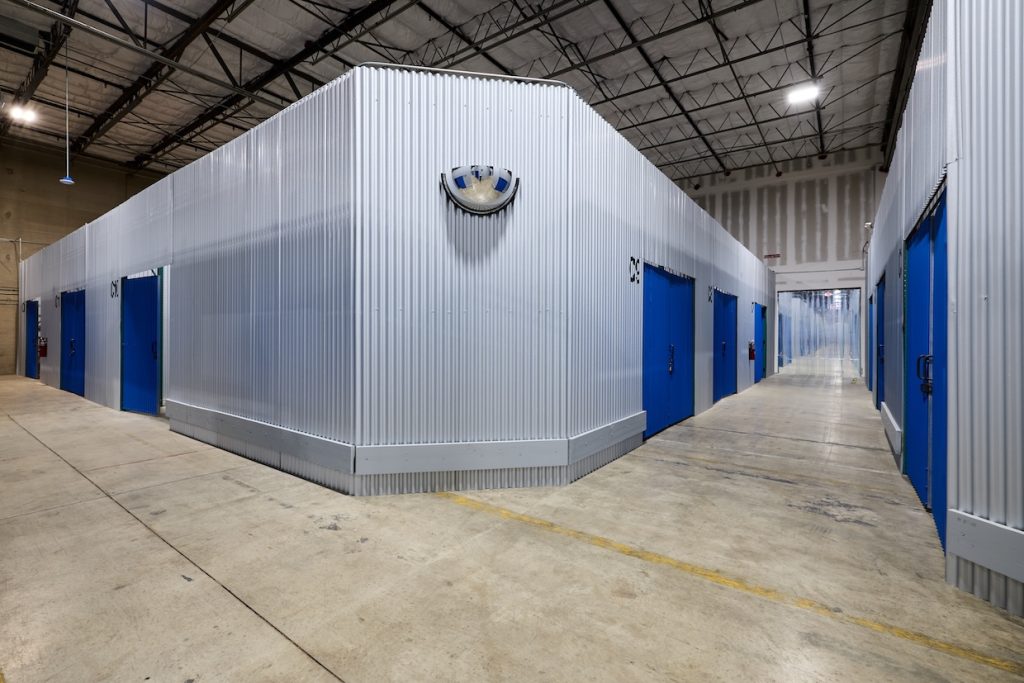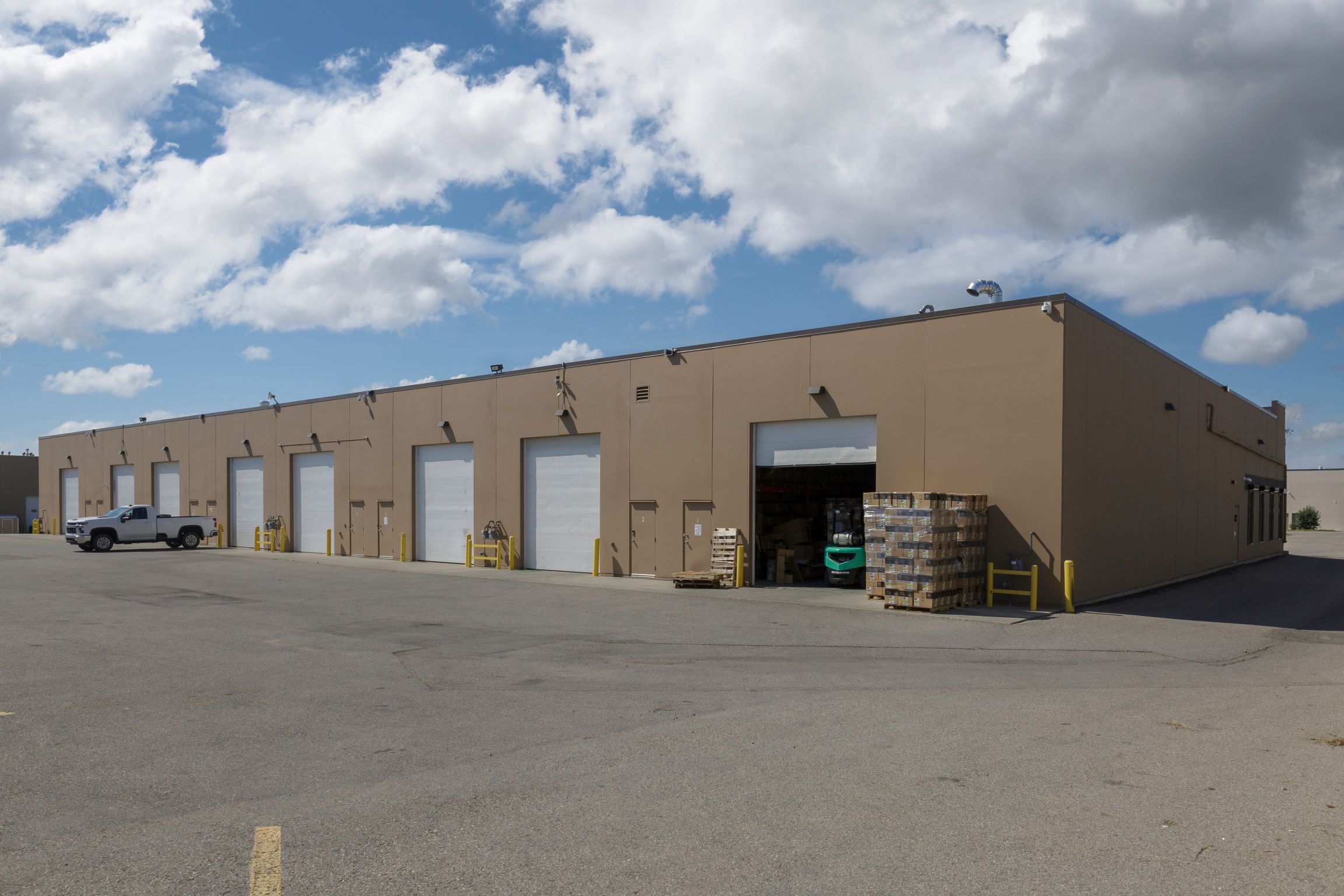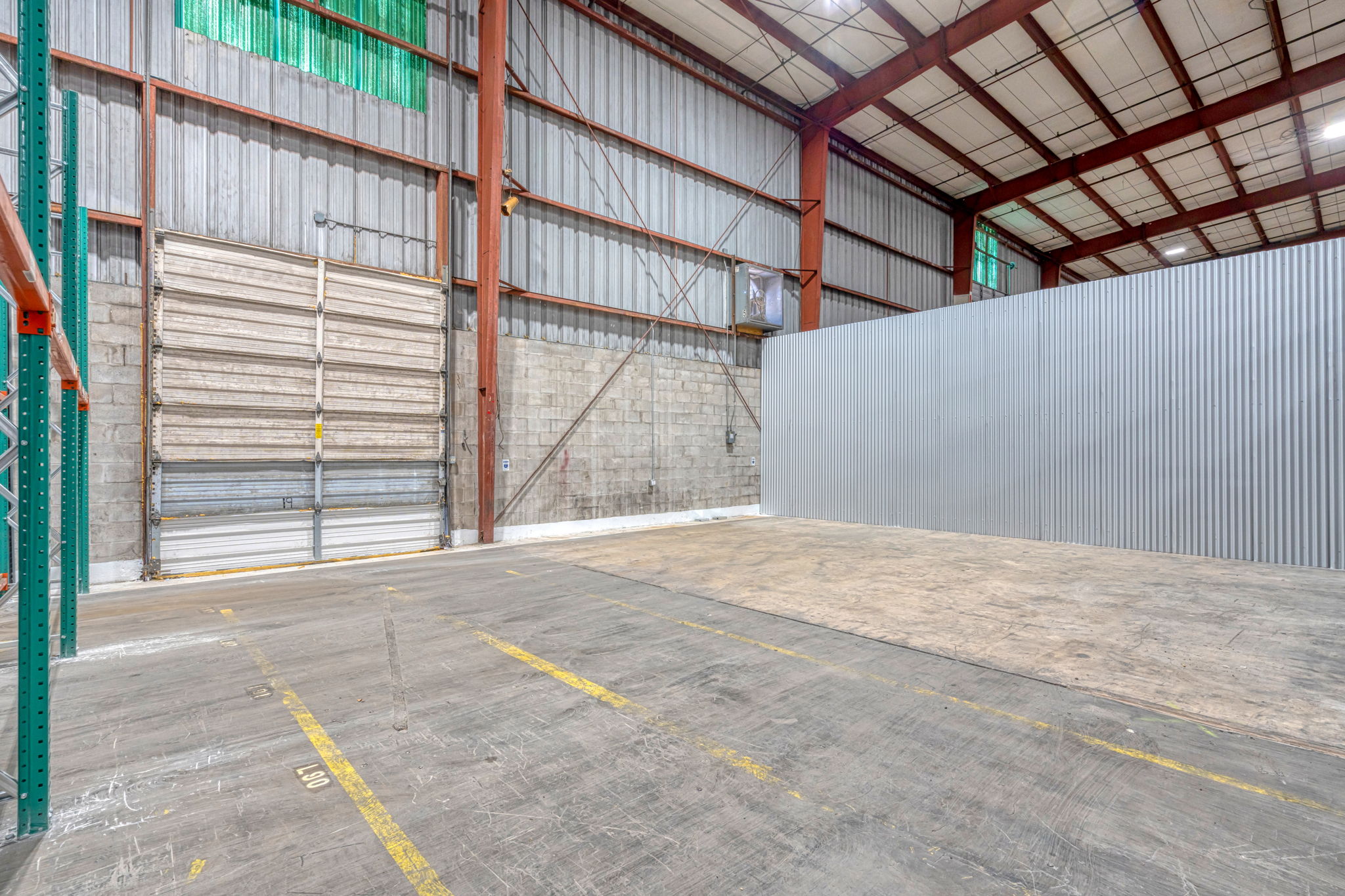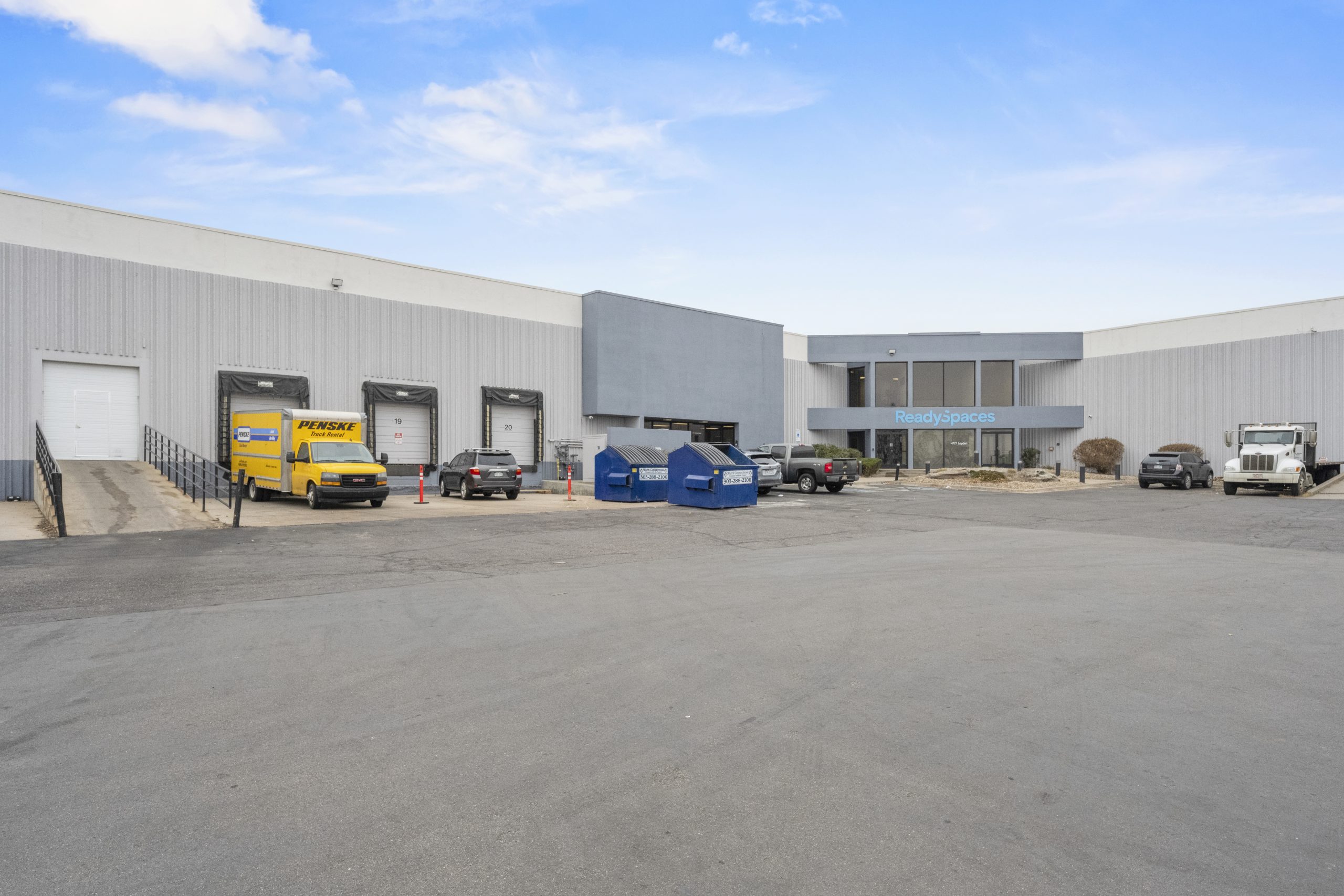Orlando Warehouse Market Report 2025: Where Theme Parks Meet Manufacturing and Create Florida’s Best Industrial Bet
Orlando’s warehouse market just turned a corner. After seven consecutive quarters of rising vacancy as 2022-2023 speculative supply delivered into softening demand, Q3 2025 marked the inflection point: 2 million square feet of positive net absorption, construction at decade lows, and CBRE identifying Orlando as one of 2026’s top U.S. markets for industrial rent growth. The combination of theme park logistics ecosystem, Lake Nona Medical City’s life sciences manufacturing cluster, and Central Florida’s position as the state’s geographic distribution center creates a perfect storm of demand drivers. The oversupply adjustment is complete. The opportunity window is open.

FACT BOX: Orlando Warehouse Market Snapshot
- Overall Vacancy Rate: 7.0-9.0% (Q2-Q3 2025, declining)
- Average Rental Rate: $11.39-11.50/SF NNN
- YoY Rent Change: +5-6% (accelerating)
- Q3 2025 Absorption: 2.0 million SF positive (turnaround quarter)
- Under Construction: 2.8 million SF (decade low, 65% pre-leased)
- Theme Park Logistics: Disney, Universal, SeaWorld supply chains
- Lake Nona Medical City: Growing life sciences manufacturing cluster
- CBRE 2026 Outlook: Top 10 U.S. markets for industrial rent growth
Current Market Conditions: The Post-Adjustment Recovery Begins
Vacancy and Availability: Seven Quarters of Pain, One Quarter of Promise
Orlando warehouse vacancy climbed steadily from 5.2% in Q4 2023 to a peak of 9.2% in Q2 2025, as approximately 12 million SF of speculative warehouse development was delivered into a market where demand temporarily softened due to rising interest rates and consumer spending uncertainty. For seven quarters, the narrative was oversupply, landlord concessions, and tenant leverage.
Q3 2025 changed the story. Net absorption turned decisively positive at 2.0 million SF—the strongest quarterly absorption since Q1 2023—and vacancy dropped to 7.0-9.0% depending on submarket. The adjustment period is ending. Supply discipline, renewed tenant demand, and Florida’s continued population growth are reasserting themselves.
The West Orlando and South Orlando submarkets led the surge in Q3 absorption, with distribution and e-commerce fulfillment tenants driving the majority of leasing activity. Properties that had been vacant for 12-18 months found tenants as pricing was adjusted to meet market realities, and businesses resumed their expansion plans.
Rental Rates: Resilience Through the Adjustment
Orlando warehouse rental rates averaged $11.39 to $11.50 per square foot NNN through Q3 2025, showing remarkable resilience despite the vacancy spike. Year-over-year rent growth of 5-6% demonstrates that Orlando never experienced the rent compression typically associated with true oversupply crises. Landlords with quality assets (modern clear heights, strong truck courts, strategic locations) largely held pricing, while older Class B and C properties absorbed the majority of vacancy pressure.
This rent resilience is significant: it signals that the 2023-2024 vacancy spike reflected a temporary supply-demand timing mismatch rather than fundamental demand weakness. As vacancy normalizes through 2026, rent growth should accelerate into the 7-9% range—which is precisely what CBRE’s 2026 industrial market outlook projects.
Small bay warehouse properties (under 50,000 SF) maintained even stronger pricing power, with rents 15-25% above comparable large bay spaces due to persistent supply shortages in this segment. Developers’ focus on large-format facilities (100,000+ SF) during the 2021-2023 boom left small bay tenants with minimal new options.
Leasing Activity: Theme Parks, Medical City, and Distribution
Orlando warehouse leasing activity reflects three distinct demand ecosystems:
Theme Park Supply Chains: Disney, Universal, and SeaWorld collectively represent one of the largest logistics and warehouse ecosystems in the Southeastern United States. These operations require enormous quantities of consumables (food and beverage), merchandise, maintenance supplies, and seasonal goods. The warehouse footprint supporting Central Florida’s theme parks exceeds 15 million SF, with continuous demand for additional distribution and storage capacity as park attendance grows.
Lake Nona Medical City Manufacturing: The emergence of Lake Nona Medical City as a life sciences research and manufacturing hub creates specialized warehouse demand for laboratory support, medical device manufacturing, pharmaceutical distribution, and cold chain logistics. This high-value industrial segment commands premium rents ($14-$ 18/SF NNN) and provides recession-resistant demand, independent of consumer spending cycles.
Central Florida Distribution Hub: Orlando’s geographic centrality within Florida makes it the logical distribution point for businesses serving statewide markets. Companies distributing to both Tampa/West Coast and Miami/East Coast population centers can minimize logistics costs by centralizing inventory in Orlando and serving both directions. This structural advantage supports steady demand for distribution and logistics, regardless of short-term economic cycles.
Development Pipeline: Decade Lows Signal Future Tightness
2.8 Million SF Under Construction, Dramatic Pullback
Orlando’s warehouse development pipeline contracted dramatically through 2025, with only 2.8 million SF currently under construction—the lowest level since 2015. This represents just 2.5% of total industrial inventory, which is well below the historical average of 4-6% for healthy markets. Critically, 65% of this space is pre-leased or build-to-suit projects, minimizing future speculative supply.
The construction pullback reflects both developers’ response to the 2023-2024 vacancy spike and challenging development economics. Building costs rose 40-50% from 2020 to 2023, while rents increased only 15-20% during the same period, compressing development margins. Without significant rent growth or declines in construction costs, new speculative warehouse development remains uneconomical at current pro forma returns.
This supply discipline is exactly what Orlando needs. The 18-to 24-month lag between construction starts and deliveries means the supply drought will become increasingly apparent through 2026-2027, driving vacancy compression and accelerating rent growth.
No Small Bay Construction: The Persistent Gap
Orlando warehouse development has focused exclusively on large-format facilities (100,000+ SF), leaving small bay properties (10,000-50,000 SF) structurally undersupplied for the third consecutive year. As of Q3 2025, no small bay warehouse projects are under construction or in the development pipeline.
This ongoing supply gap creates a significant opportunity for existing small bay property owners and a challenge for small business tenants. The combination of theme park supplier businesses, Lake Nona life sciences support services, and general small business growth generates steady demand in the small bay that new supply is failing to meet.
Lake Nona Medical City: The Hidden Industrial Opportunity
Life Sciences Manufacturing Cluster Emergence
Lake Nona Medical City has evolved from a conceptual master-planned community into a thriving life sciences and medical research hub, boasting over 6,000 employed professionals. The University of Central Florida’s medical school, Nemours Children’s Hospital, Orlando VA Medical Center, and numerous private research facilities create an ecosystem that increasingly requires specialized industrial warehouse support.
Life sciences manufacturing and research facilities require adjacent warehouse space for:
- Laboratory supply chain management (chemicals, equipment, consumables)
- Medical device manufacturing and distribution (FDA-regulated clean rooms, assembly)
- Clinical trial logistics (temperature-controlled storage, secure distribution)
- Research equipment storage (expensive, specialized instrumentation)
This specialized warehouse demand commands premium rents of $14-18/SF NNN—30-50% above standard warehouse rates—due to enhanced infrastructure requirements (HVAC precision, security systems, specialized fire suppression) and regulatory compliance costs.
The Manufacturing Reshoring Opportunity
Lake Nona’s life sciences cluster positions Orlando to benefit from the reshoring of pharmaceutical and medical device manufacturing. As U.S. companies reduce their dependence on Asian supply chains for critical medical products, locations with established medical research infrastructure, a skilled workforce, and access to East Coast logistics become increasingly attractive.
Several preliminary medical device manufacturing projects have been announced in the Lake Nona and East Orlando submarkets, though most remain in planning/permitting stages as of Q3 2025. If even a fraction of these projects move forward, they would generate 1-2 million SF of high-value industrial warehouse demand over 24-36 months.
Small Bay Warehouse Opportunities: Supply Shortage Continues
Limited Options, Premium Pricing
Orlando’s small bay warehouse market (under 50,000 SF) offers tenants better availability than Tampa’s critically tight 3.2% vacancy, but conditions remain landlord-favorable. Small bay vacancy ranges from 6-8% depending on submarket and property quality, with well-located properties (proximity to I-4 or Florida’s Turnpike) essentially fully leased.
Small bay warehouse rental rates range from $12-16/SF NNN, depending on location, age, and functionality—a 15-25% premium over comparable large bay space. Landlord concessions are modest:
- Free Rent: 2-3 months for 5-year terms
- TI Allowances: $8-12/SF for spaces 15,000-30,000 SF
- Lease Terms: 3-5 years minimum
- Rent Escalations: 3-4% annual increases
Purchase Opportunities in Secondary Submarkets
Small bay warehouse purchase opportunities exist in Orlando’s secondary industrial submarkets (Apopka, Pine Hills, east of SR-417) at prices of $110-150/SF, depending on condition and location. These properties appeal to:
- Owner-users seeking to lock in occupancy costs
- Small investors pursuing 7-9% cap rates
- Value-add buyers willing to reposition older facilities
Primary submarket small bay properties (West Orlando, South Orlando near attractions, and the Lake Nona area) command $160-$ 200/SF and typically receive multiple offers when listed.
2026 Market Outlook: CBRE’s Top Rent Growth Market
Near-Term Recovery Acceleration (Q4 2025 – Q4 2026)
Orlando’s warehouse market fundamentals are positioned for accelerating improvement through 2026. CBRE’s industrial market outlook identifies Orlando as one of the top 10 U.S. markets for industrial rent growth in 2026, projecting annual increases of 7% to 9%. This forecast reflects:
- Q3 2025 absorption turnaround demonstrating demand recovery
- Construction at decade lows, limiting future supply
- Theme park operations, Lake Nona life sciences, and distribution demand drivers
- Vacancy compression from the current 7-9% toward 5-6% equilibrium
Tenants who delayed expansion during the 2023-2024 adjustment period face reduced negotiating leverage through 2026. The brief window of tenant-favorable conditions (elevated vacancy, landlord concessions) is closing.
Long-Term Structural Advantages
Orlando’s warehouse market benefits from multiple structural advantages that support long-term demand:
Geographic Centrality: Optimal Florida distribution point for statewide logistics Tourism Economy: Theme park logistics ecosystem generates consistent demand independent of economic cycles Life Sciences Cluster: Lake Nona Medical City provides high-value, recession-resistant industrial demand Population Growth: Central Florida receives 400+ daily new residents (150,000+ annually) No Geographic Constraints: Unlike Miami or Tampa, Orlando has abundant developable land for future industrial expansion
These advantages position Orlando for sustained warehouse market strength through economic cycles. Markets with multiple independent demand drivers (tourism, life sciences, distribution, manufacturing) demonstrate more resilience than single-industry industrial markets.
Strategic Recommendations for Warehouse Tenants
For Businesses Seeking 50,000-150,000 SF:
- Act in Q4 2025 – Q1 2026 before vacancy tightens further
- West Orlando and South Orlando submarkets offer the best availability
- Negotiate 5-7 year terms to capture current pricing before acceleration
- Properties delivered 2023-2024 may still offer modest concessions
For Small Bay Users (<30,000 SF):
- Expect $12-16/SF NNN with limited landlord flexibility
- Secondary submarkets (Apopka, east of SR-417) provide better value
- Consider purchase opportunities at $110-150/SF in secondary locations
- Primary submarkets near attractions/Lake Nona at 6-7% vacancy
For Life Sciences/Medical Device Companies:
- Lake Nona and the East Orlando areas have specialized infrastructure
- Expect premium rents ($14-18/SF) for compliant facilities
- Limited existing supply; consider build-to-suit for requirements >50,000 SF
- Proximity to medical research facilities commands 10-20% location premium
For Opportunistic Investors:
- Small bay properties in secondary submarkets offer value-add potential
- Pre-stabilized properties from 2023-2024 deliveries at slight discounts
- Lake Nona area properties positioned for long-term life sciences demand
- Properties with theme park supply chain tenant bases provide stable cash flow
The Bottom Line
Orlando’s warehouse market completed its supply-demand adjustment in Q3 2025, marked by 2 million SF of positive net absorption and construction at decade lows. CBRE identifies Orlando as one of the top U.S. markets for industrial rent growth in 2026, projecting annual increases of 7-9% as vacancy compresses toward equilibrium. The combination of theme park logistics ecosystems, Lake Nona Medical City’s emerging life sciences manufacturing cluster, and Central Florida’s geographic distribution advantages creates multiple overlapping demand drivers.
The adjustment is over. The recovery is beginning. The next 12 months present the last window of tenant-favorable pricing before supply discipline translates to rising rents and falling vacancy rates.
Where theme parks meet manufacturing, Florida’s best industrial bet emerges.
Data Sources & Market Research
This Orlando warehouse market report synthesizes data from the following authoritative sources:
- CBRE – U.S. Industrial Outlook 2026, Orlando Market Analysis Q3 2025
- JLL – Orlando Industrial Market Report Q2 2025
- Cushman & Wakefield – Orlando Warehouse Market Overview Q3 2025
- Colliers – Central Florida Industrial Market Analysis Q2 2025
- Newmark – Orlando Industrial Real Estate Trends Q3 2025
- Avison Young – Florida Industrial Markets Q2 2025


